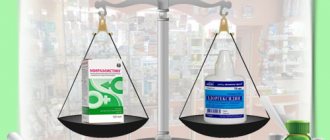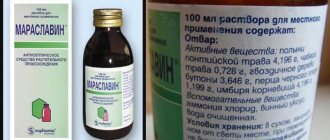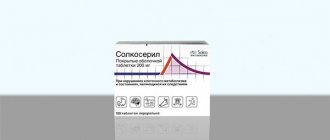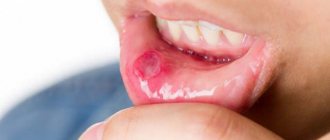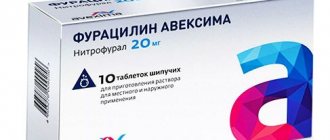Miramistin is an unremarkable bottle with a spray nozzle. But he can do so many things! If you look at the list of indications, we can say that the drug helps with literally everything. From anything that is infectious in nature. Or is about to become one. Burns, wounds, viruses, operations and much more are the scope of application of Miramistin. It relieves inflammation and has an antimicrobial effect. It is especially pleasant that the simple composition is characterized by a virtual absence of contraindications or adverse reactions, and the drug can be prescribed from birth.
Miramistin copes well with burns
Description
Miramistin is a domestic broad-spectrum antiseptic drug that is used for the prevention and treatment of bacterial, fungal and viral infections. Initially, the drug was intended to disinfect compartments on Soviet spaceships and stations. And now Miramistin has shown itself to be excellent in the prevention and therapeutic treatment of wounds, purulent-septic processes, the appearance of which accompanies surgery and traumatology. Miramistin effectively fights pathogenic microorganisms, therefore it is applicable in gynecology, urology, dentistry, otolaryngology and other branches of medicine.
But you should not think that Miramistin simply has an antimicrobial effect; it is quite strong and fights even those strains that are insensitive to other antibiotics. Miramistin interacts with ascomycetes, yeast and yeast-like fungi, dermatophytes, and some other pathogenic fungi. And what is especially important, Miramistin is able to influence human immunodeficiency viruses, herpes, etc. That is, demonstrate an antiviral effect. The medicine is also quite active against pathogens that cause sexually transmitted diseases (STDs).
Miramistin prevents infection of burns and wounds, as it accelerates the absorption of purulent secretions, stimulates the process of tissue regeneration and the manifestation of the body's protective reactions.
And all these wonderful properties practically do not cause allergic reactions or irritation to the skin. This is what it means that the product was developed for the space industry.
Miramistin in the throat of a baby
What does Dr. Komarovsky say about the use of an antiseptic compound in the treatment of tonsil diseases in newborns?
Despite the fact that there are restrictions in the annotation - children under 3 years of age, it is still prescribed for infants. But in this case, it is important to strictly follow the doctor’s recommendations.
How to give a bactericide for diseases of the ENT organs? For newborns, lubricate the throat area with a soft cotton swab dipped in a solution. It is advisable to repeat the procedure three times a day.
A prerequisite is preliminary cleaning of the baby’s oral cavity. As soon as the child has eaten, his mouth is rinsed with water and then the medicine is applied.
to the content?
Indications
The range of uses of Miramistin is quite wide. So, the attending physician may prescribe the use of Miramistin in the following cases:
- In traumatology and surgery: prevention of suppuration, treatment of purulent wounds. Used in the treatment of purulent-inflammatory diseases of the musculoskeletal system.
- In obstetrics and gynecology: treatment and prevention of suppuration of wounds and injuries received during childbirth, treatment of inflammatory and infectious processes of the genital organs (vulvovaginitis, endometritis).
- In venereology and dermatology: treatment and prevention of dermatomycosis, pyoderma, also used for mycoses of the feet, candidiasis of the skin and mucous membranes, in particular, for thrush.
- In urology: treatment of urethritis (acute and chronic forms) and urethroprostatitis.
- In dentistry: prevention of infectious and inflammatory processes occurring in the oral cavity. Treatment of stomatitis, gingivitis, periodontitis. Miramistin also carries out hygienic treatment of removable dentures.
- In otorhinolaryngology: used for sinusitis, otitis, laryngitis, pharyngitis, chronic tonsillitis. Miramistin is prescribed for sore throat. In particular, the drug is used in complex therapy for pharyngitis, chronic tonsillitis, as well as for sore throat in children from the age of three.
- Combustiology: treatment of superficial and deep burns of II and IIIA degrees, preparation of burn wounds for dermatoplasty.
- The solution is used for individual prevention of the development of diseases that are sexually transmitted to humans (syphilis, gonorrhea, chlamydia, trichomoniasis, genital herpes, genital candidiasis, etc.).
Analogs of Miramistin throat spray: what to replace?
If, with a red throat caused by an infection, there are contraindications to the antimicrobial component, then it is necessary to look for an effective substitute.
First of all, doctors suggest Chlorhexidine, which has similar properties. It costs less, but this does not make it any less effective.
It is recommended to take Octenisept for children; it is also possible to buy it in Europe. A suitable analogue would be Hexoral, Maxicold.
to the content?
How to use Miramistin
The use of Miramistin as an antiseptic drug is quite widespread. In addition to the areas listed in the table below, the medicine is prescribed for the treatment of acne, as a prevention of influenza and colds, and for diaper rash.
How to use Miramistin correctly
Please note that Miramistin may cause irritation of the nasal mucosa.
Any prescription of the drug, indication of the dosage and duration of the course are made by the attending physician.
| Disease | Course duration | Reception |
| Purulent sinusitis. Tonsillitis, pharyngitis and laryngitis. | From 4 to 10 days. | The maxillary sinus is washed with a sufficient amount of the drug. Gargling and/or irrigation (10-15 ml) 3-4 times a day is indicated. |
| Stomatitis, gingivitis, periodontitis. | Until remission occurs. | Rinse the mouth with 10-15 ml of the drug, 3-4 times a day. |
| Surgery, traumatology, combustiology. | 3-5 days. | 2-3 times/day. irrigate the surface of wounds and burns, loosely pack wounds and fistula tracts, fix gauze swabs soaked in the drug. |
| Prevention of postpartum infection. C-section. | 5-7 days. 7 days. | Irrigation with a gynecological nozzle is indicated before childbirth, during childbirth, after each vaginal examination and in the postpartum period, 50 ml of the drug in the form of a tampon (2 hours). Before the operation, the vagina is treated, during the operation - the uterine cavity and the incision on it, and in the postoperative period, tampons moistened with the drug are inserted into the vagina (2 hours). |
| Angina. | Until remission occurs. | Rinse 4-5 times/day. |
| Urethritis and urethroprostatitis. | 10 days. | Miramistin is injected using a urological applicator into the urethra 2-3 ml 1-2 times a day. |
| Prevention of sexually transmitted diseases. | Miramistin is used no later than 2 hours after sexual intercourse. | Using a urological applicator (gynecological attachment), insert Miramistin into the urethra for 2-3 minutes: for men (2-3 ml), for women (1-2 ml) and in the vagina (5-10 ml). Treat the skin of the inner thighs, pubis, and genitals. After the procedure, it is recommended not to urinate for 2 hours. |
| Thrush, inflammatory diseases of the genital organs. | 7-14 days. | A tampon is moistened with Miramistin and inserted intravaginally. Douching is indicated. |
| Purulent otitis. | Until remission occurs. | 2 ml of solution is injected into the external auditory canal. |
Miramistin during pregnancy and lactation
Miramistin can be used by pregnant women and nursing mothers, but, as is usually the case with this group of patients, use is possible after consulting the doctor supervising them. They can be used to gargle, rinse the nose and treat affected surfaces, since Miramistin does not enter the bloodstream. But in any case, an obstetrician-gynecologist should prescribe the drug during pregnancy and breastfeeding.
Miramistin for children
Miramistin for children
If we touch on the issue of using Miramistin in pediatrics, the drug can be prescribed by a doctor for children during an exacerbation of pharyngitis or during the exacerbation stage of chronic tonsillitis. If such conditions are diagnosed, then most likely the pediatrician will prescribe irrigation of the child’s throat with Miramistin.
- children 3-6 years old: press the head of the spray nozzle once (3-5 ml per irrigation), 3-4 times/day;
- children 7-14 years old: press twice (5-7 ml per irrigation), 3-4 times/day;
- children over 14 years old: 3-4 times pressing (10-15 ml per irrigation), 3-4 times/day.
As for the nose, care should be taken here, since Miramistin can have an irritating effect on the mucous membrane. Also, Miramistin is prescribed to young patients if they have chickenpox. The skin is treated with Miramistin in order to disinfect it. If the drug is prescribed to an infant, it is most likely for the treatment of surfaces that require disinfection. Miramistin, due to its composition, accelerates the regeneration of the epithelium. After the drug has dried naturally, you can use diaper rash cream or a special powder containing talc.
The instructions for use stipulate the age of the child from which the use of Miramistin is permissible. Thus, children under one year of age undergo therapy with Miramistin only under the supervision of a specialist; children up to three years of age can be prescribed the drug solely for indications. Remember that children's bodies are sensitive, and even such a safe drug as Miramistin can cause allergic reactions.
Analogs
Analogs
At the moment, one structural analogue of the drug Miramistin has been released on the pharmacological market:
- Okomistin (eye drops).
If you do not take into account the composition, then in terms of therapeutic action the antiseptic Chlorhexidine is closest to the drug Miramistin. You can also note Octenisept.
Miramistin or Chlorhexidine?
Most often, when they talk about replacing the drug Miramistin, Chlorhexidine is cited as an example. What is the significant difference between these drugs? If you focus on the indications for use, they are almost identical. True, it is believed that Chlorhexidine has more side effects and is generally toxic. But this disadvantage has a downside. This “aggressiveness” is directed against microbes. Miramistin is a more gentle remedy, it is safe, so it is prescribed for the treatment even of infants. The drug Miramistin does not monitor negative reactions of the body to its use; it is less likely to cause a burning sensation and unpleasant consequences in the form of dysbacteriosis.
Miramistin: instructions for use of throat spray for adults
The drug, which is produced with a spray nozzle, makes it possible to irrigate mucous tissues, spraying it over a large area of the oral cavity and pharynx.
Many people ask, is it possible to spray antiseptic down the throat? Will it get into the stomach and cause side effects?
In fact, the instructions indicate that the aerosol is not prohibited from being sprayed into the pharynx area, since a small percentage of the substance, swallowed along with saliva, will not provoke irritation in the gastrointestinal tract.
The finished product does not need to be diluted. The patient first activates the bottle atomizer by double pressing. After this, the spray begins to be applied to the affected area. At one time, only 4 ml of volume is sprayed from the bottle.
In case of purulent sore throat or other lesions of the ENT organs, you must press the sprayer three times. The frequency of daily administration and dosage are selected by the doctor.
The duration of therapy depends on the complexity of the disease. Usually, medicinal manipulations are prescribed for laryngitis, tonsillitis, and sore throat for a course of 5-10 days.
Do I need to spit out the substance after injection? No, the administered dose is enough to destroy the infection, but not enough to cause side effects.
to the content?
Composition of the drug
The drug contains a complex chemical substance that has a long name. Miramistin is an aqueous solution of the substance 0.01 percent. It is completely transparent, but sometimes there is sediment.
The solution is available in the form:
- drops in the nose and ears;
- throat spray;
- gargling solution;
- bottles with attachments for douching in gynecology;
- bottles with sprayers for use in urology, surgery, dentistry;
- sterile eye drops.
Miramistin is also produced in the form of 0.5 percent ointments used in dermatology. The uniqueness of the active substance is that it recognizes diseased cells without affecting healthy ones.
Features of use in children
The instructions recommend using the product for children starting from 3 years old. This is primarily due to the fact that babies do not know how to gargle. Although the importance of this simple procedure cannot be overestimated. Therefore, the sooner parents manage to teach their child to “gurgle” with his throat, the more funds will become available for his treatment.
The instructions recommend using the product for children starting from 3 years old.
Doctors advise teaching children to brush their teeth on their own from the age of 2. After cleaning, he rinses his mouth with clean water, from now on you can gradually explain to him how to gargle. Let the baby first master the “theoretical course” without water:
throws back his head and pronounces the letter “x” for a long time, after which you need to repeat it, taking a little clean water, be sure to spit out the liquid.
Until the baby masters the technique, there is no need to try to gargle with Miramistin or other pharmaceutical drugs. The baby may choke or swallow liquid.
Side effects of Miramistin are minimal, but if used incorrectly, negative effects can occur. The drug is intended for topical use, so it should not enter the stomach. After rinsing, the drug used must be spat out.
The mucous membrane of children is more delicate than that of adults. Therefore, they often experience a slight burning sensation. In addition, a sick child is more capricious and may refuse to use the drug at the slightest unpleasant sensation. Therefore, the question of how to gargle a child is very relevant. For children aged 3-6 years, Miramistin is diluted in a ratio of 1 part water to 1 part solution. Remembering that the total amount should be about 10 ml. For a child over 6 years old, the solution is made a little stronger, diluting it less: for 10 ml of Miramistin, 5 ml of water is enough.
What to do if a child or adult accidentally swallows the drug? The manufacturer claims that the product is absolutely safe. Therefore, if you accidentally swallow it, there is no need to worry. But you should not allow a large amount of the drug to enter the stomach. There are no known cases of poisoning or overdose, but it’s not worth taking the risk and “starting” the sad statistics.
As an alternative to rinsing, you can spray the baby's mucous membranes. A convenient nozzle will help direct the medicine precisely to the inflamed area. For a child under 6 years old, one injection is enough, for a child under 4 years old – 2.
Video on the topic: consultation with a specialist
Share with friends
Rate this article:
ratings, average:
out of 5)
Loading…
From birth, a person is surrounded by various microbes and viruses. Some are safe and even necessary for the normal functioning of the body, others lead to disease. One of the main ways infection enters the body is the throat, so it usually starts to hurt first. Scientists have long been trying to create a medicine that would be suitable for people of any age and be as effective as possible.
Miramistin's unique ability to cope with a large number of microorganisms makes it an indispensable assistant for sore throat in an adult or child
One of these drugs is Miramistin for the throat. It was originally intended for use in extreme space conditions. Over time, the drug became available to ordinary users; it is successfully used to disinfect the oral cavity and purulent wounds.
Miramistin is sold in the form of a solution, ointment, spray. Thanks to this, the possibilities of its use expand: irrigation or gargling, applying bandages to the skin. Miramistin's unique ability to cope with a large number of microorganisms makes it an indispensable assistant for sore throat in an adult or child. It is prescribed to women during pregnancy and to infants up to one year old.
Application in ENT practice
Miramistin is widely used for diseases of the ear, nose and throat. It treats inflammation of the inner and outer ear. It is also used in the form of drops for sinusitis and sinusitis. They help with allergic swelling of the mucous membrane.
This is important, because some nasal drops, for example Nazivin, cause swelling of the nasal mucosa. Miramistin is also administered as a puncture, sometimes for inflammation of the nasal sinuses.
Miramistin is also used for pharyngitis, laryngitis, sore throat, and tonsillitis. This remedy does not cause irritation to the mucous membranes as, for example, from Chlorhexidine. All ENT diseases must be treated comprehensively, alternating with other medications, for example, throat lozenges such as Strepsils. Miramistin in the form of lozenges is not yet available.
